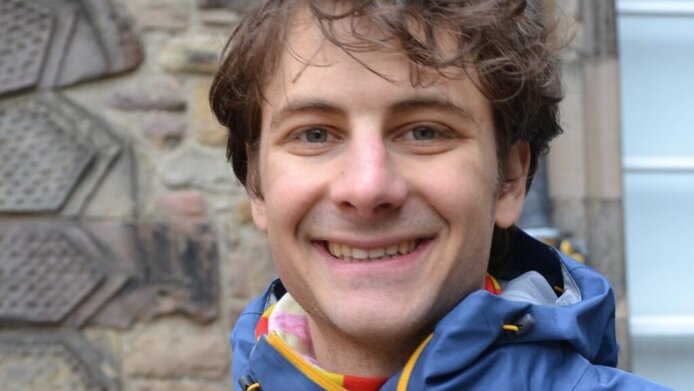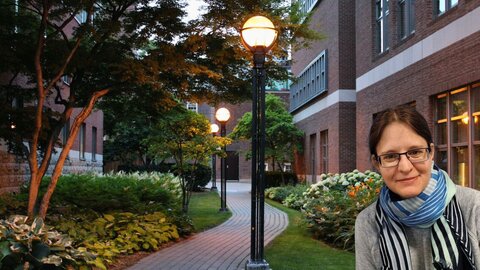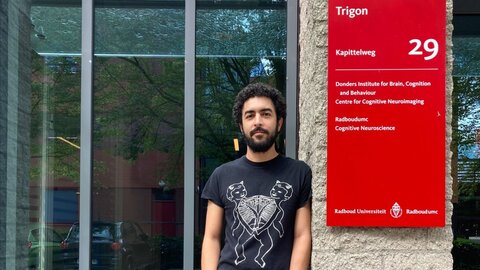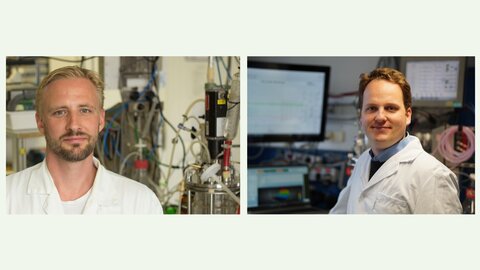Doing research and living in Glasgow

Early on during my PhD studies I had already come across some of the work by Stephen Barnett, Professor of Theoretical Physics at the University of Glasgow. As soon as I took a closer look I was struck by the diversity of research topics in his group. During my first short research visit to get acquainted with the place, it was this wide range of ideas and interests that I found particularly exciting.
Quantum optics and other forces
The idea of applying for an Erwin-Schrödinger Fellowship for research into special effects in the interaction of atoms and temporally modulated light fields arose during this first meeting. It has been known for quite some time that atoms can be cooled and trapped with the help of laser beams, and the optical traps built for this purpose are part of the standard repertoire of quantum optics. When the intensity of the laser beam is modulated temporally, additional small forces are generated that exceed the known level of interaction. These forces form the basis of this theoretical research project. The outcome of the project can facilitate more precise measurements of gravitational fields or other small forces with the help of trapped clouds of atoms.
Post-doc and perfect timing
As my wife and I had already moved to Glasgow before the Erwin-Schrödinger grant was approved, Stephen Barnett offered me a post-doc position in the new UK Quantum Technology Programme. This initiative by the UK government aims to ensure the successful transition of quantum technologies from laboratory to industry. Even though I am only marginally involved in the project now that my Schrödinger Fellowship has been granted, I still benefit from the experience and contacts I gained from this network. Fortunately, it had also been the perfect time for my wife to go abroad and specifically to Glasgow. She started a postgraduate degree at the University of Strathclyde, the city’s second large university.
Booming city, exciting history
Having known Scotland from previous travels, my wife and I had debated for several years which city was more beautiful, Glasgow or Edinburgh. – A debate that is also pursued with great zeal in Scotland. Meanwhile we have agreed that the mystical and old city of Edinburgh is probably more attractive from a sightseeing point of view, while Glasgow is more interesting, vibrant and dynamic. As a classical manufacturing town, Glasgow suffered from the decline of British heavy industry, but the pace of its recovery has been picking up since the 1990s. This visible modernisation provides an exciting contrast to Glasgow’s history of rich shipbuilders, ingenious engineers and impoverished working-class families.
Austrian wafer biscuits, whisky and the sea
Despite this modern outlook, you don’t have to go far to experience the wild and pristine beauty of the Scottish highlands. While the Lochs and the sea are best explored in a kayak, the rolling hills and narrow glens offer splendid tours for hillwalkers. On a windy peak, the union of the Austrian and the Scottish souls is best enjoyed with Manner’s wafer biscuits, a popular Austrian sweet treat, and whisky. Of course, sometimes the typically less than ideal weather can be annoying, but the right gear helps to defy the wind and the rain, and one learns to appreciate the sunny days even more.
From lab to pub
Going to Glasgow was certainly one of the best decisions I have ever taken. At the university I work in an international team of kind and helpful people who enjoy good research as much as a nice pint at the pub. In my leisure time I can choose between exploring a modern city in constant evolution or a wild and unspoiled countryside.





